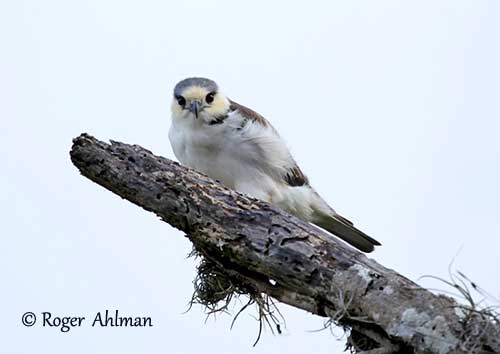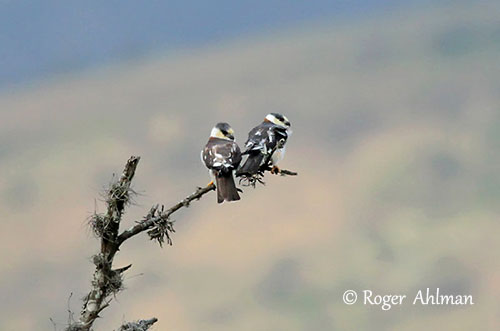
Fr: Elanion perle
Ang: Pearl Kite
All: Perlaar
Esp: Elanio Enano
Ita: Nibbio perlato
Nd: Parelwouw
Sd: pärlglada
Photographers:
Roger Ahlman
Pbase Galleries Peru and Ecuador & My bird pictures on IBC
William Price
PBase-tereksandpiper & Flickr William Price
Text by Nicole Bouglouan
Sources:
HANDBOOK OF THE BIRDS OF THE WORLD Vol 2 by Josep del Hoyo-Andrew Elliot-Jordi Sargatal - Lynx Edicions - ISBN: 8487334156
A GUIDE TO THE BIRDS OF COLOMBIA by Steven L. Hilty and William L. Brown - Princeton University Press – ISBN 069108372X
BIRDS OF PERU by Thomas S. Schulenberg, Douglas F. Stotz, Daniel F. Lane, John P. O’Neill, Theodore A. Parker III – Princeton University Press 2007– ISBN: 978-0-691-13023-1
A Guide to the Birds of Panama: With Costa Rica, Nicaragua, and Honduras De Robert S. Ridgely, John A. Gwynne – Editeur: Princeton University Press, 1992 – ISBN: 0691025126, 9780691025124 – 534 pages
Wikipedia, the free encyclopaedia
Neotropical Birds – Cornell Lab of Ornithology
Global Raptor Information Network - Working to Conserve Birds of Prey in nature
Pearl Kite
Gampsonyx swainsonii
Accipitriformes Order – Accipitridae Family
INTRODUCTION:
The Pearl Kite was formerly placed in the family Falconidae on the basis of its small size and plumage pattern fairly similar to falconets. But based on several morphological features, it was later placed in the family Accipitridae and closely related to the genus Elanus. The Pearl Kite is the sole member of the genus Gampsonyx.
Three subspecies share the large range in the northern half of South America where it seems to expand its distribution because it benefits from forest destruction.
It frequents woodlands, savannas, scrub and cultivated areas in lowlands. It feeds on lizards, frogs and insects, and also takes a variety of small prey. It hunts typically from perches or by flying low above the ground.
The Pearl Kite is not globally threatened and expands slowly its range, especially in Central America.

DESCRIPTION OF THE BIRD:
Biometrics:
Length: 20-28 cm
Wingspan: 45-55 cm
Weight: 94-120 g
The Pearl Kite of nominate race has blackish upperparts and whitish underparts with rufous thighs and black patch on breast side. The wings have a white trailing edge.
On the head, the crown is blackish. Forehead and cheeks are yellowish to orange-buff. Chin and throat are white, like the nuchal collar bordered below by a dark rufous band.
The slender, black bill is strongly hooked. The cere is blue-grey. The eyes are brown to reddish. Legs and feet are bright yellow.
The female is 10-20% larger than male.
The immature resembles adult, but the nuchal collar is yellowish whereas back and secondary feathers have rufous edges. The eyes are browner in juvenile.
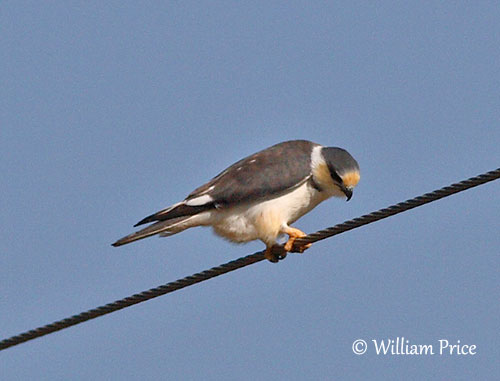
SUBSPECIES AND RANGE:
The Pearl Kite has three subspecies.
G.s. leonae is found in SE El Salvador, S Honduras, W Nicaragua, Costa Rica and Panama. It also occurs in N and E Colombia, through Venezuela and Trinidad to Guyana and Suriname, and S to NE Ecuador and Brazil, N of R Amazon.
This race has rufous flanks.
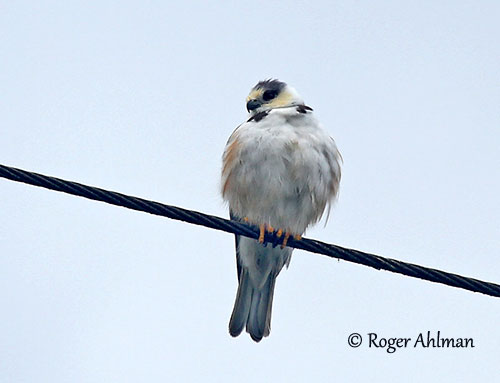
G.s. magnus is found in W Ecuador and NW Peru.
This one has also rufous flanks.
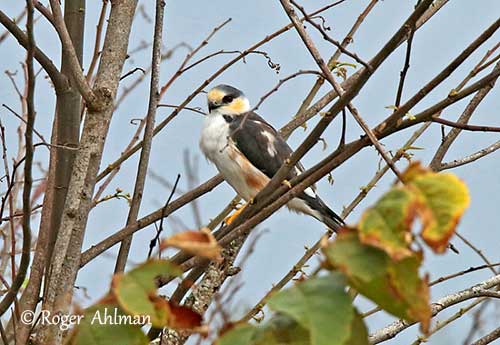
G.s. swainsonii (described above) occurs in Brazil, S of R Amazon S to E Peru, N and E Bolivia, Paraguay and N Argentine.
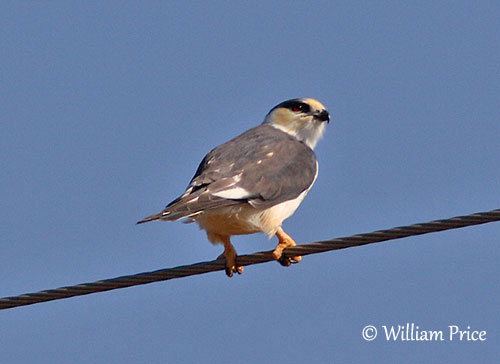
HABITAT:
The Pearl Kite frequents dry open country with scattered trees, shrubby pastures, sparsely wooded savannas and dry to arid scrub. It can be seen in urban parks with some trees.
The species is relatively common in humid, partially deforested areas where it is expanding its range. It is visible up to 1,000 metres of elevation in Colombia.
CALLS AND SONGS: SOUNDS BY XENO-CANTO
The Pearl Kite gives high-pitched scolding “kitt-y, kitt-y, kitt-y” or a musical “pip-pip-pip-pip”.
BEHAVIOUR IN THE WILD:
The Pearl Kite feeds primarily on lizards (Anolis), but it also takes frogs and insects, and occasionally small birds such as Ruddy Ground-Dove or Blue Black Grassquit and Tropical Mockingbird in Trinidad.
It hunts from high perch or hovers before swooping down on to the prey. It also forages while flying low above the ground.
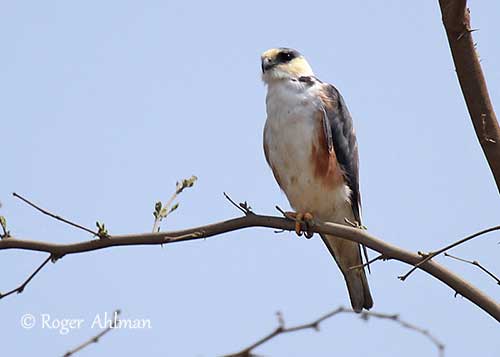
The Pearl Kite male performs aerial displays, a fluttering flight interspersed with glides. The female may sometimes use this display too. The copulation usually follows courtship feeding by male to female.
This species is probably sedentary, but following changes in the habitat such as deforestation, it may move to these areas to expand its range. The young birds disperse and leave the parental territory.
The flight of the Pearl Kite is swift and usually low above the ground. When foraging, it hovers in falcon-like motion.
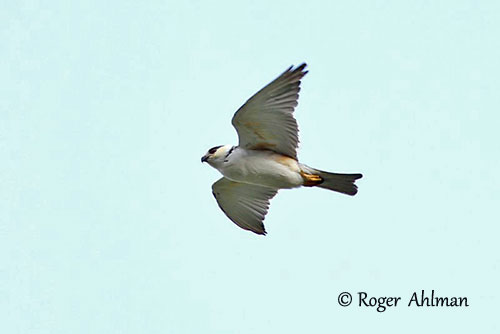
REPRODUCTION OF THIS SPECIES:
The breeding season appears to be related to the rains and may vary depending on the range.
The Pearl Kite builds a small, flimsy platform high in tree, from 4-8 metres above the ground to 18-20 metres in tall trees.
The shallow structure is made with twigs, and both adults bring new twigs almost continuously during the cycle.
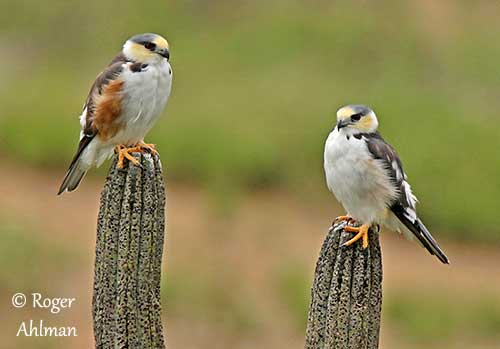
The female lays 1-3 white eggs with chestnut markings. The incubation is mainly by female, but the male may replace her for short periods during the day. The incubation lasts 28-30 days in Argentine, and 34-35 days in Trinidad.
The young are fed by the female with the food brought at nest by the male. The young fledge 33-35 days after hatching.
This species may produce two broods per season.
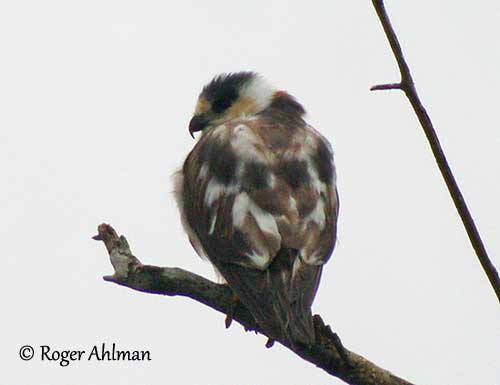
PROTECTION / THREATS / STATUS:
The Pearl Kite has benefited from forest clearance, and the species is slowly expanding its range, especially in response to deforestation in some areas.
The population is roughly estimated to number 670/6,700 mature individuals.
The Pearl Kite is currently evaluated as Least Concern.
